Abstract
Everninomicins B and D are components of a complex of antibiotic substances produced by Micromonospora. Both were shown to be highly active inhibitors of growth of all gram-positive bacteria, Neisseria, and Bacteroides studied in vitro. Potency of activity appeared to be greater than that of chloramphenicol, but less than that of penicillin G, when assayed against strains susceptible to each of the drugs. The everninomicins were bacteriostatic for all strains tested, except group A streptococci. No facultatively anaerobic gram-negative bacilli were susceptible. Resistant mutants were selected with difficulty from susceptible staphylococci in the laboratory, and these demonstrated no cross-resistance to available antimicrobial agents. Most variations in media, growth conditions, or procedure of assay had little or no effect on antimicrobial activity. Only addition of serum or increase in inoculum size reduced antibacterial activity. Significant differences in activity of the two components were encountered infrequently; the B component was four- to sixfold more active against gonococci and group A streptococci, whereas the D component was fourfold more active against enterococci. Because of the high degree of in vitro activity and lack of resistance among susceptible genera of bacteria, the everninomicins clearly merit further careful study as potential therapeutic agents.
Full text
PDF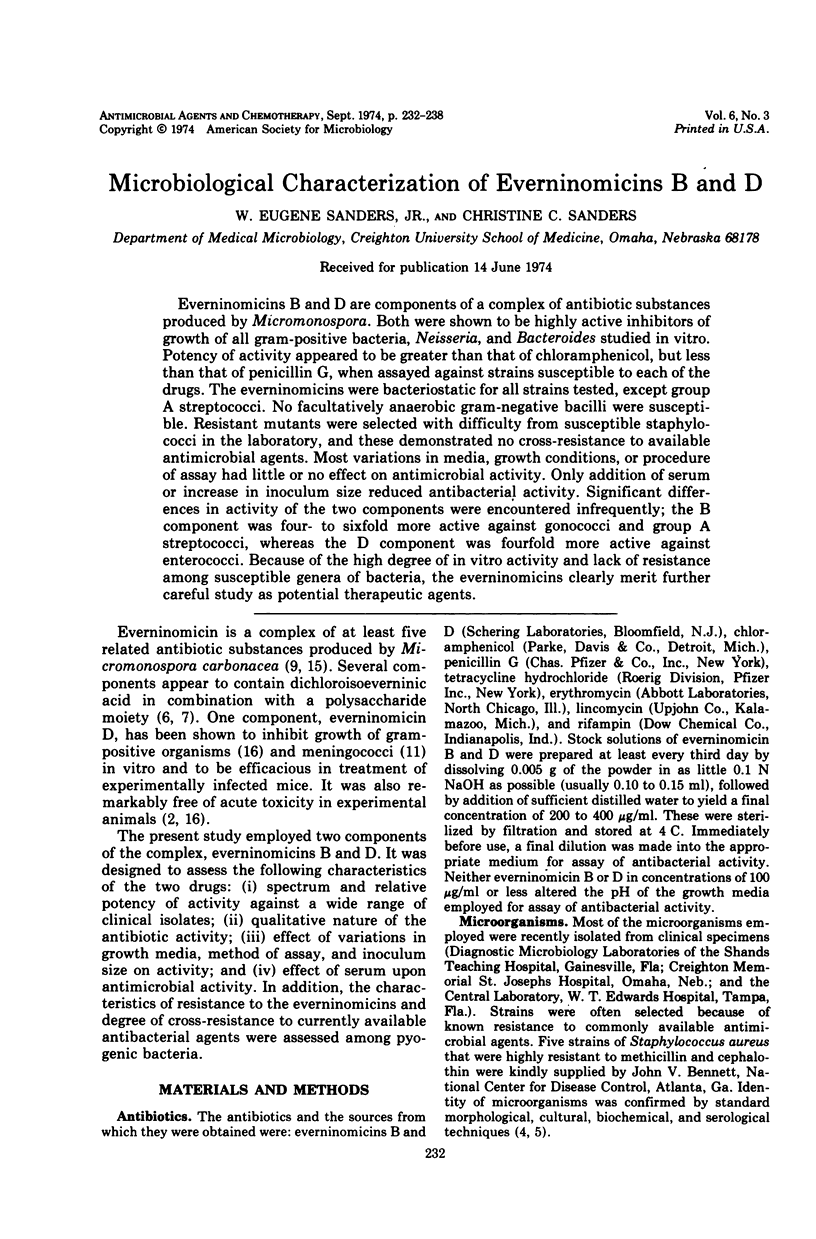
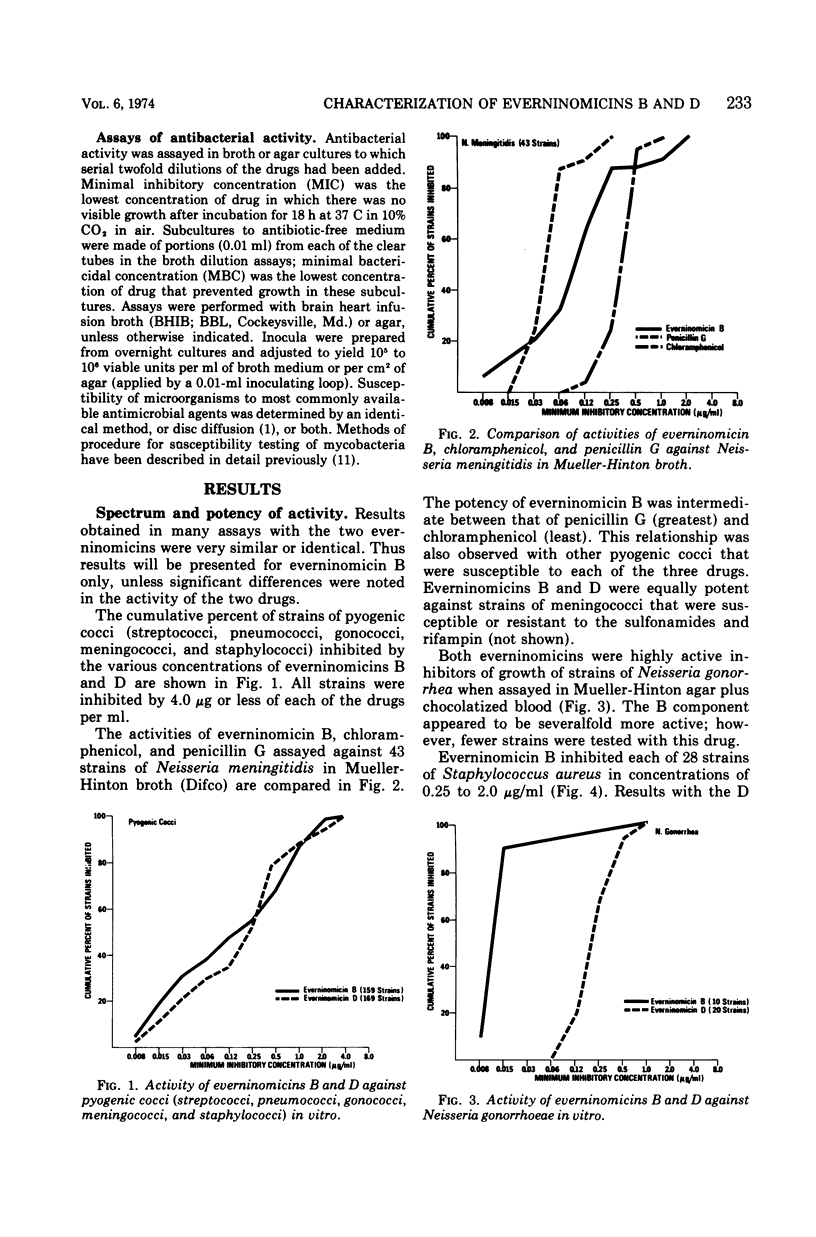
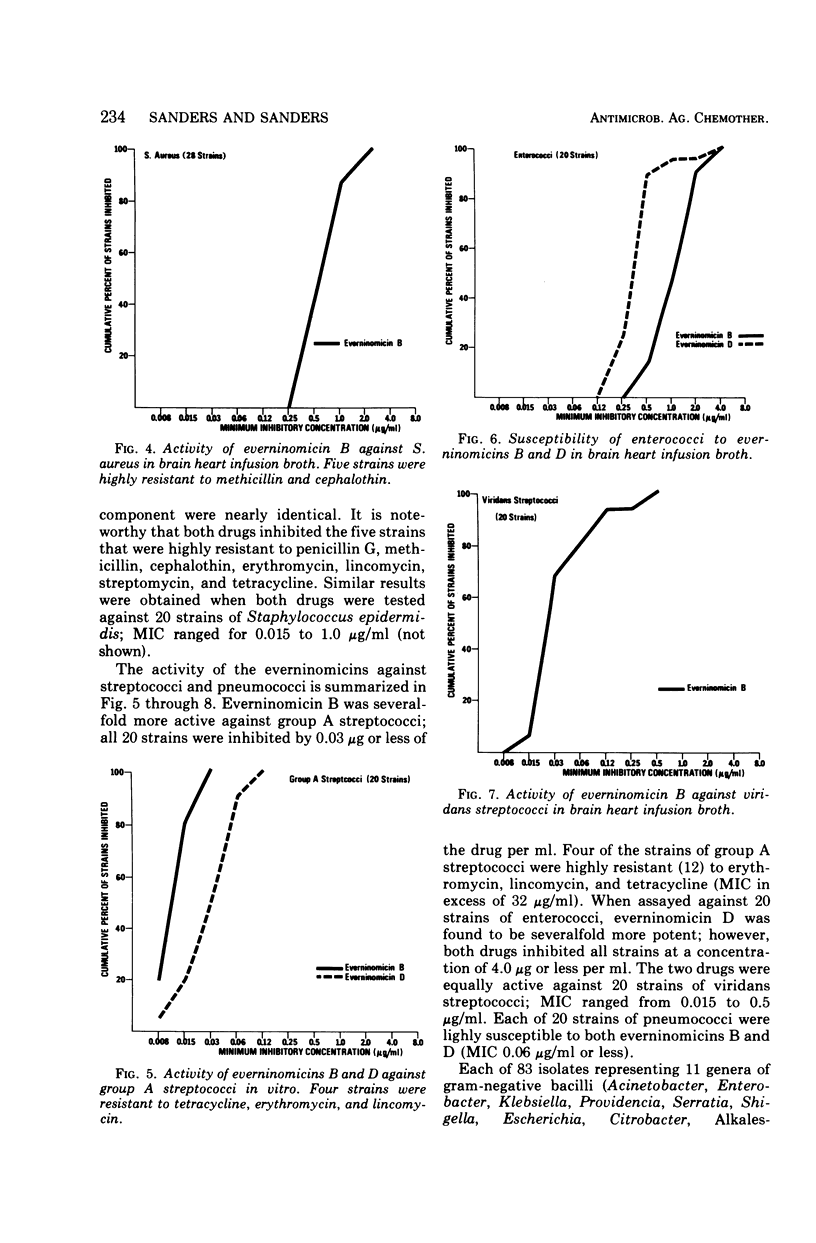
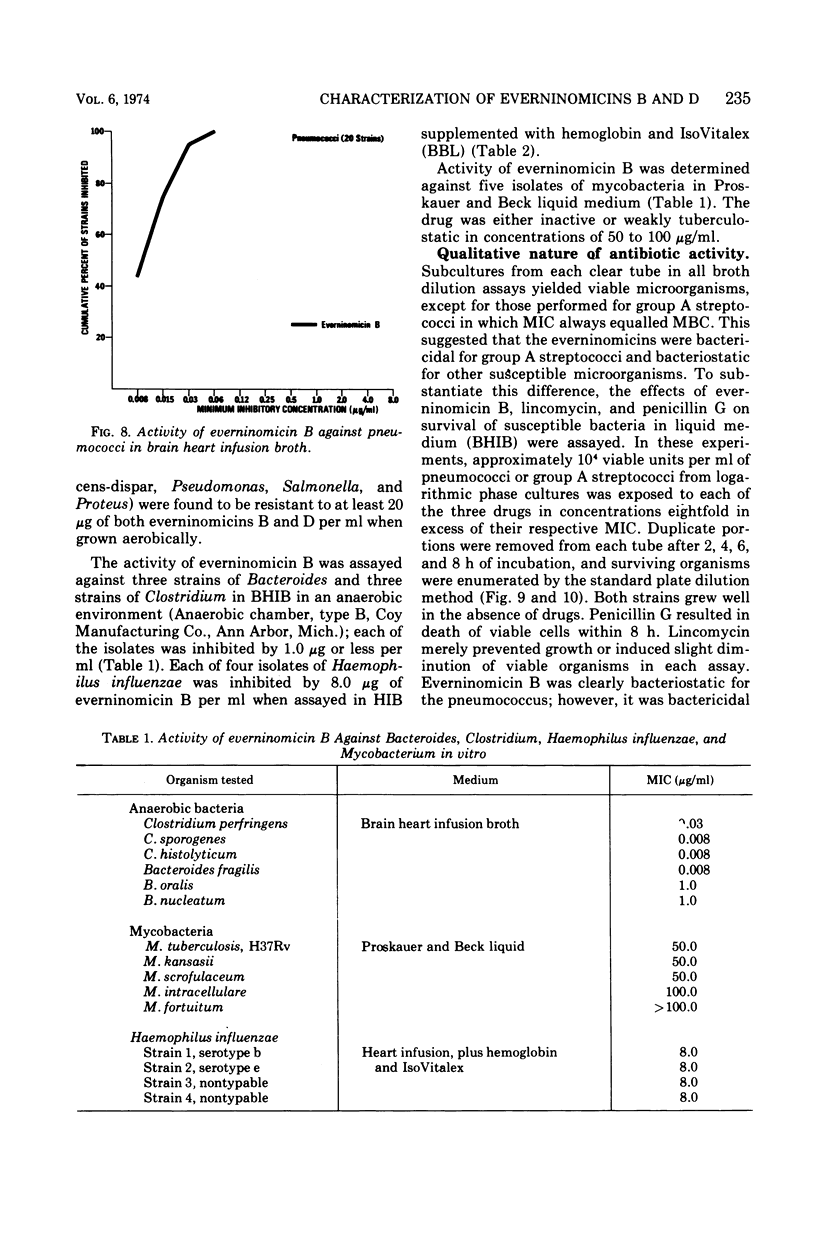
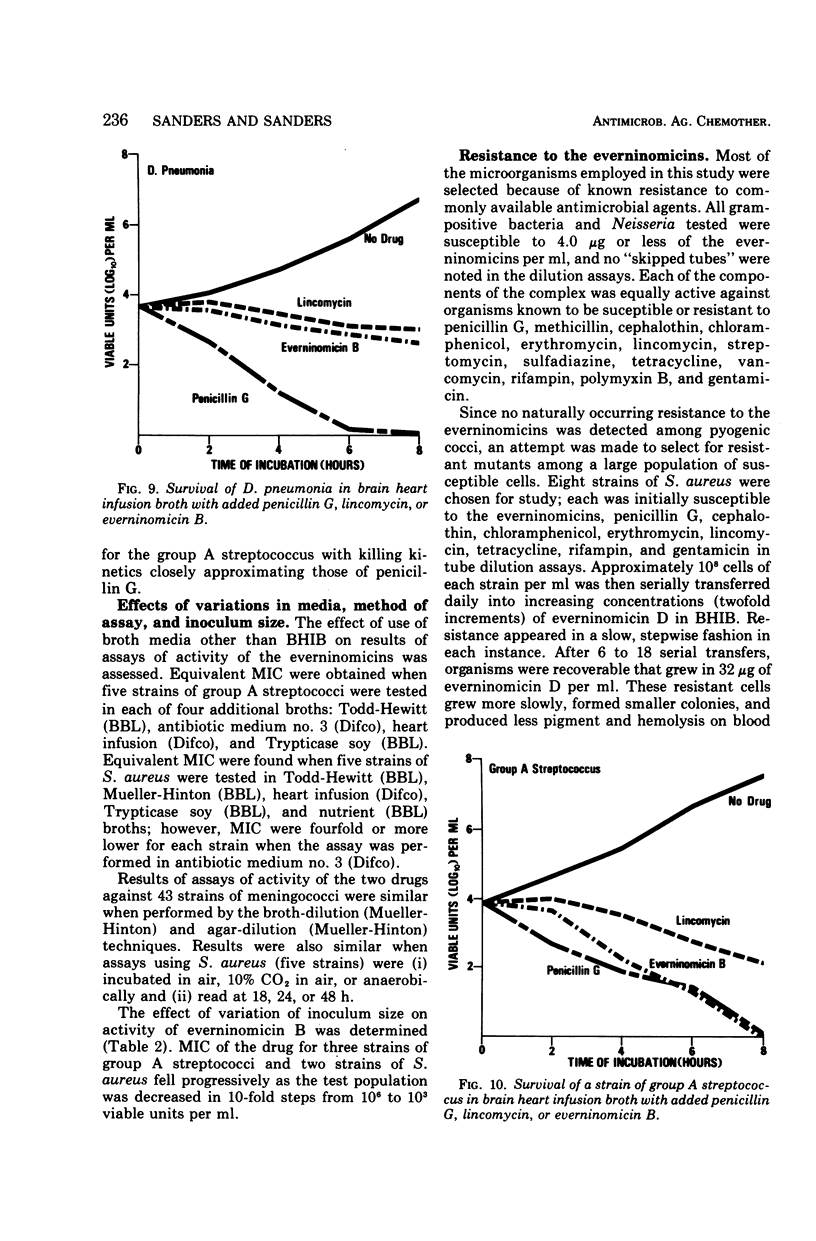
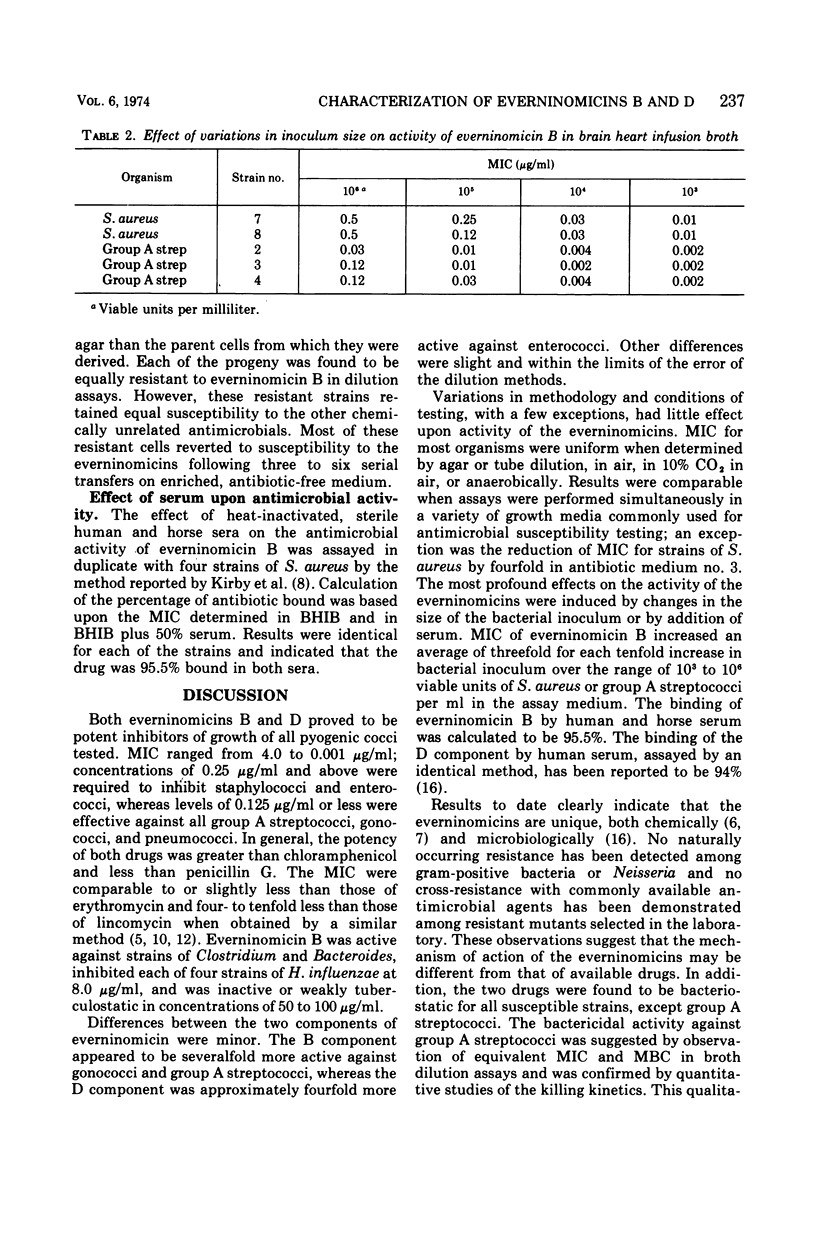
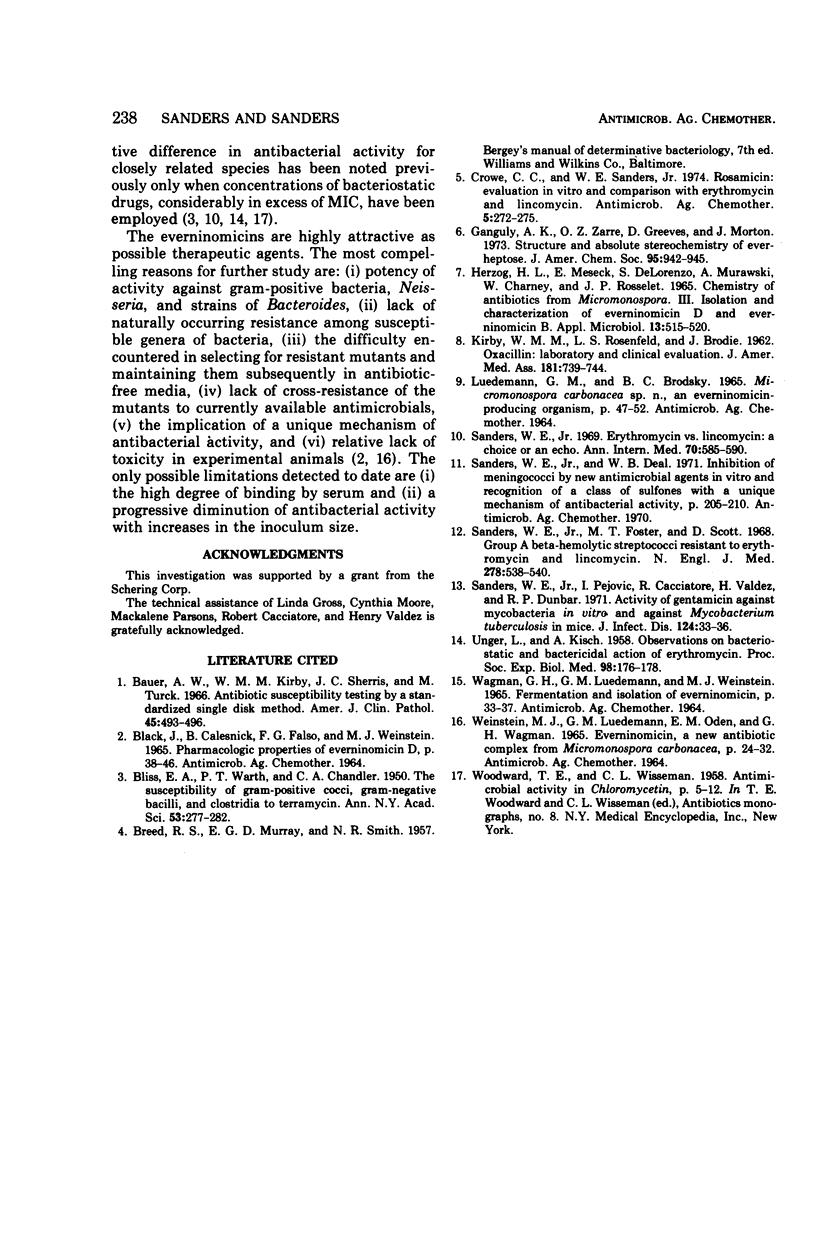
Selected References
These references are in PubMed. This may not be the complete list of references from this article.
- BLISS E. A., WARTH P. T., CHANDLER C. A. The susceptibility of gram-positive cocci gram-negative bacilli, and clostridia to terramycin. Ann N Y Acad Sci. 1950 Sep;53(2):277–282. doi: 10.1111/j.1749-6632.1950.tb42159.x. [DOI] [PubMed] [Google Scholar]
- Bauer A. W., Kirby W. M., Sherris J. C., Turck M. Antibiotic susceptibility testing by a standardized single disk method. Am J Clin Pathol. 1966 Apr;45(4):493–496. [PubMed] [Google Scholar]
- Crowe C. C., Sanders W. E., Jr Rosamicin: evaluation in vitro and comparison with erythromycin and lincomycin. Antimicrob Agents Chemother. 1974 Mar;5(3):272–275. doi: 10.1128/aac.5.3.272. [DOI] [PMC free article] [PubMed] [Google Scholar]
- Ganguly A. K., Sarre O. Z., Greeves D., Morton J. Structure and absolute stereochemistry of everheptose. J Am Chem Soc. 1973 Feb 7;95(3):942–945. doi: 10.1021/ja00784a063. [DOI] [PubMed] [Google Scholar]
- HERZOG H. L., MESECK E., DELORENZO S., MURAWSKI A., CHARNEY W., ROSSELET J. P. CHEMISTRY OF ANTIBIOTICS FROM MICROMONOSPORA. 3. ISOLATION AND CHARACTERIZATION OF EVERNINOMICIN D AND B. Appl Microbiol. 1965 Jul;13:515–520. doi: 10.1128/am.13.4.515-520.1965. [DOI] [PMC free article] [PubMed] [Google Scholar]
- Heberling R. L., Kalter S. S. Induction, course, and transmissibility of monkeypox in the baboon (Papio cynocephalus). J Infect Dis. 1971 Jul;124(1):33–38. doi: 10.1093/infdis/124.1.33. [DOI] [PubMed] [Google Scholar]
- KIRBY W. M., ROSENFELD L. S., BRODIE J. Oxacillin: laboratory and clinical evaluation. JAMA. 1962 Sep 1;181:739–744. doi: 10.1001/jama.1962.03050350001001. [DOI] [PubMed] [Google Scholar]
- Sanders E., Foster M. T., Scott D. Group A beta-hemolytic streptococci resistant to erythromycin and lincomycin. N Engl J Med. 1968 Mar 7;278(10):538–540. doi: 10.1056/NEJM196803072781005. [DOI] [PubMed] [Google Scholar]
- Sanders E. Lincomycin versus erythromycin: a choice or an echo. Ann Intern Med. 1969 Mar;70(3):585–590. doi: 10.7326/0003-4819-70-3-585. [DOI] [PubMed] [Google Scholar]
- UNGER L., KISCH A. Observations on bacteriostatic and bactericidal action of erythromycin. Proc Soc Exp Biol Med. 1958 May;98(1):176–178. doi: 10.3181/00379727-98-23980. [DOI] [PubMed] [Google Scholar]


